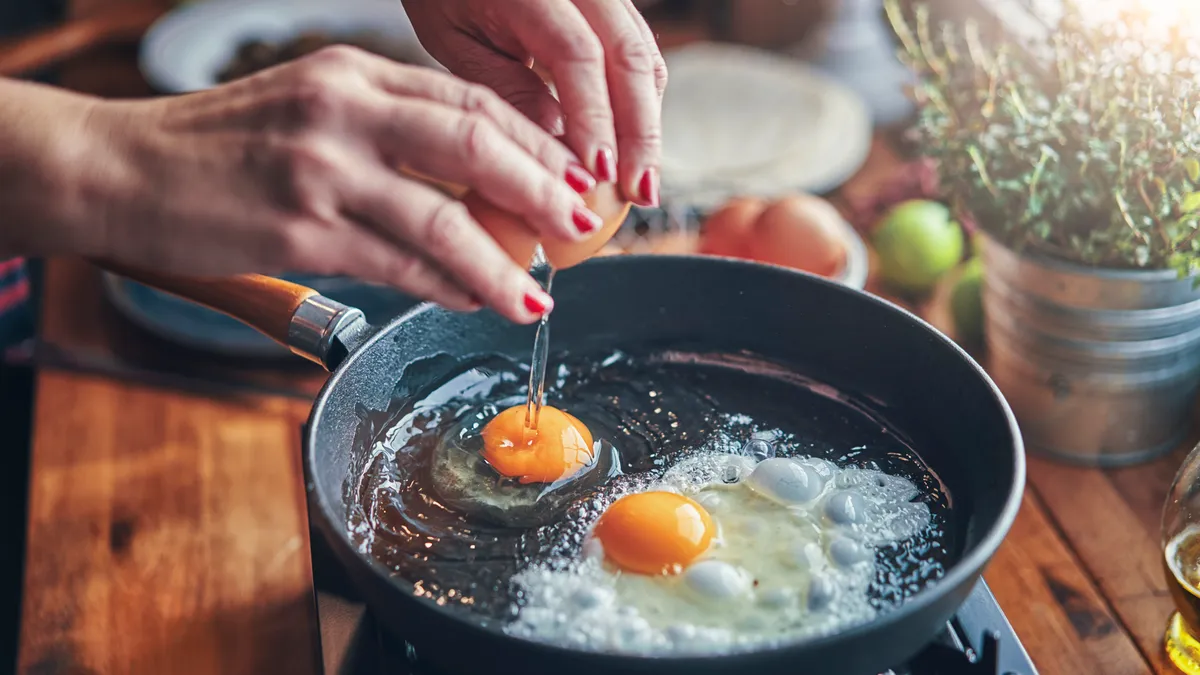
I have my cast iron ready all season, but fall through winter is a bustling stretch for these sturdy skillets. Cast iron has a lot of grit but weaknesses that can damage its carefully slicked and seasoned surface. Banging your skillet around on the stovetop or over a fire pit isn’t likely to harm it much, but certain foods can eat away at the patina, reversing all those years of diligent flavor building.
I spoke with expert Eric Rowse, a lead chef instructor of Culinary Arts at the Institute of Culinary Education, for tips on using cast-iron cookware and which foods might be causing permanent damage to your beloved pots, pans, and roasters.
Don’t miss any of our unbiased tech content and lab-based reviews. Add CNET as a preferred Google source on Chrome.
In general, foods high in acid cause the most significant problems for cast iron. A quick sauté or sizzle is generally OK, but simmering or roasting high-acid ingredients for an extended period — or forgetting to take them out after cooking — can eat away at the surface.
To keep your cast-iron skillet slick, smooth, and worthy of its place on the stovetop throne, here are four foods you should never cook in a cast-iron skillet
Read more: Yes, It’s Time to Reseason Your Cast-Iron Skillet. Here’s the Right Way
4 foods that can ruin cast-iron cookware
According to Rowse, you can technically cook anything in cast iron — even fish and eggs –. Still, some foods react poorly to cast iron if not done properly, leading to surface decay or food with a metallic taste.
1. Tomatoes
“Highly acidic foods, such as tomato and tomato-based dishes, can be problematic on raw iron, poorly or underseasoned cast iron,” Rowse says.
“Cooking these foods in neglected cast iron can produce a metallic taste. If the pan is well seasoned and cleaned out after each use, it isn’t a problem.”
To be safe, cook some bacon in your skillet afterward to give the seasoning extra protection. As a bonus, you’ll have bacon on hand. What you don’t want to do is leave the acidic food just sitting in the pan, which can eat away at the seasoning.
2. Vinegar
Vinegar can eat away at a seasoned cast-iron skillet for the same reason as tomatoes, sending you back to square one. Vinegar-based foods like adobo or Carolina-style barbecue sauce are good examples of acidic foods that shouldn’t sit in a cast-iron pan for long.
If you use vinegar in a recipe and cook it in cast-iron, clean the pan immediately with hot water and salt or a small dash of gentle dish soap.
Read more: Clean Your Cast Iron Skillet Easily With This Common Kitchen Staple
3. Citrus
While there may not be many reasons to put citrus in a cast-iron skillet, certain recipes call for a fair amount of lemon or lime juice. A squeeze of lemon at the end probably won’t destroy your cast-iron pan, but don’t let citrus juice simmer inside of it for long, or your precious patina won’t survive the night.
4. Wine-based sauces
Cooking with wine is almost always a good idea. In fact, we have a list of recipes that thrive with a few ounces of red or white. But letting acid-heavy wine braise or simmer in a cast-iron pot or pan for too long could cause the slick patina to erode, leaving you with an unseasoned skillet that food will stick to.
Can you cook eggs in cast iron?
While they won’t damage your pan, eggs are tricky to pan-fry without leaving a sticky mess. Cast-iron cookware isn’t as nonstick as chemically coated pans, but it’s still a fine candidate for scrambling or frying the morning staple.
“I love cooking eggs in cast iron,” Rowse told us. I have a small 5-inch one that I use for fried eggs. Cast iron can get super hot, but precise control is harder because it retains heat for longer, making it more difficult to make small adjustments to the temperature.”
Can you cook fish in cast iron?
Likewise, many varieties of fish are flaky and tend to stick to surfaces if not appropriately managed. If your cast-iron’s patina isn’t properly slicked or is too hot when the fish goes down, you may scrape half of your halibut from the bottom of the pan.
How to avoid a cast-iron cooking conundrum
First and foremost, you’ll want to properly season so you can cook even the stickiest foods without worry.
Avoid slow-braising or simmering on the stovetop for long periods when cooking acidic foods in cast iron. When the food is finished cooking, remove it and wash your cast-iron pan immediately with hot water, a drop of dish soap and a sprinkling of kitchen salt for extra stuck-on foods.



